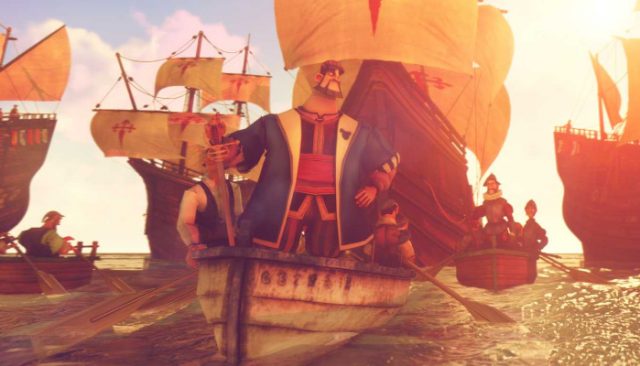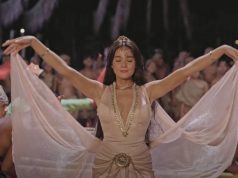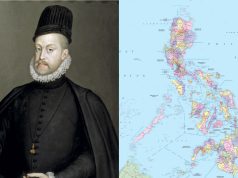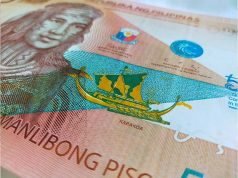
An animated film produced by a Basque Country-based studio about the voyage of Portuguese explorer Ferdinand Magellan and Spanish navigator Juan Sebastian Elcano earned criticisms in the Philippines for historical inaccuracies such as the portrayal of Lapu-Lapu as a villain.
“Elcano and Magellan: The First Voyage Around the World” follows Magellan and Elcano who set sail with five ships in 1519 and reach Cebu, Philippines in 1521. A synopsis on its website read:
“This is the story of the brave seafarers who grabbed the helm of history and changed its course forever. A journey which, as many people know, was started by Magellan, but that not so many know was concluded by Juan Sebastian Elcano, the real protagonist of our story.”
This feature is also part of Spain’s celebration of the 500th anniversary of the expedition that circled the world from Spain to Indonesia.
It was also supposed to highlight that it was Elcano who completed the three-year trip since Magellan was killed in the battle against Lapu-Lapu and his men on an island that would become part of the Philippines.
The project was produced by Dibulitoon Studio, a Spain-based animation production house, and distributed by Barton Films. The project was headed by Filmax International.
A mixup of villains and heroes
Most criticisms online pointed out that Magellan and his men who eventually prompted the 300-year colonization of the Philippines were painted as protagonists while the natives, particularly Lapu-Lapu, were seen as antagonists.
Lapu-Lapu has long been hailed as a historical hero in the Philippines for being a primary figure in the Battle of Mactan. There are monuments dedicated to him in Cebu and a fish was named after him.
Some historians, however, dismiss the grade school textbook depiction of him as the quintessential warrior who fought foreign invaders.
Historian Danilo Madrid Gerona challenged the long-held assumption that Lapu-Lapu himself killed Magellan. He said the deed could have been by one of his 1,500 men.
Yet some Filipinos like Twitter user @jamaisryuu argued that the movie glorifies colonialism and only looks at history from the perspective of the colonizer.
“It’s infuriating seeing one of our country’s national heroes being portrayed as the villain, not to mention how said portrayal will most probably affect outsider’s views of the country, especially now when the country is known for its poor quality of life. So please, do not support this film at all costs!” the user said in a thread.
Okay, let's try this again.
Please do not, under any circumstances, support the Elcano and Magellan movie. It protrays colonizers in a good light, like they're the heroes when Magellan brought suffering to the native Filipinos. And it also portrays the natives (especially + pic.twitter.com/OyhO1Z8JJW
— LINHARDT DAY 🎂🎉 (@jamaisryuu) November 6, 2019
Pre-colonial clothes were not that scant
Another user @Athena_Serrano shared that the clothes of characters in “Elcano & Magallanes” were a departure from those of the pre-colonial people, as seen in the Boxer Codex, an old manuscript with photos of ethnic groups.
The user also juxtaposed costumes of characters of GMA’s “Amaya,” a series set in pre-colonial times.
“The women’s clothes in M&E look more Polynesian than indigenous,” she said and attached photos on her post.
Filipino Visayan clothing in ‘Elcano & Magellan’ VS Actual Filipino Visayan clothing from pre-colonial Philippines
The women’s clothes in M&E look more Polynesian than indigenous
Image sources 2: Costumes from the Philippine TV period drama ‘Amaya’
Image sources 3: Boxer Codex pic.twitter.com/3ZEEakOBvK— Athena Serrano (@Athena_Serrano) November 6, 2019
‘Elcano,’ a ripoff of ‘El Dorado’?
Some Twitter users also pointed out the similarities of the characters of the Spanish production with those of American film “The Road to El Dorado” released in 2000.
all of their characters are a complete rip-off from camino hacia el dorado. LMAO pic.twitter.com/BQvywD7fD8
— 𝑝𝑎𝑚 | SSKK AU 📌 (@teagogh) November 6, 2019
A sober take by historians
Urged to comment on the film, the National Historical Commission of the Philippines released a tempered response to the online firestorm and explained the nature of history as told from the perspective of the storyteller.
Both Spanish and Filipinos have their own historical biases, it said, but producers have artistic freedom.
“The [National Quintessential] Committee and its Secretariat, the National Historical Commission of the Philippines, respect artistic freedom.
“The NHCP, as the government’s Philippine history agency, does not endorse nor critique films and other art forms. What we request the public is to be critical and make use of the opportunity to discover by themselves who truly were our ancestors, by reading books about Philippine history, culture and society, or visiting the National Museum and other museums and galleries alike.”
Historian Xiao Chua had a similar view. In a statement, he said the producers should be allowed to exhibit the film without suffering from censorship.
Just because you don't agree on something you want it banned? Almost three decades na yang The Last Temptation of Christ…
Posted by Xiao Chua on Thursday, November 7, 2019
“Espanyol sila, malamang perspektiba nila ‘yan. Kung mapanood ng mga bata eh ‘di sabihin nating mali. Keber. Kung alam natin ang tama, eh ‘di chill lang tayo,” Chua wrote on Facebook.









